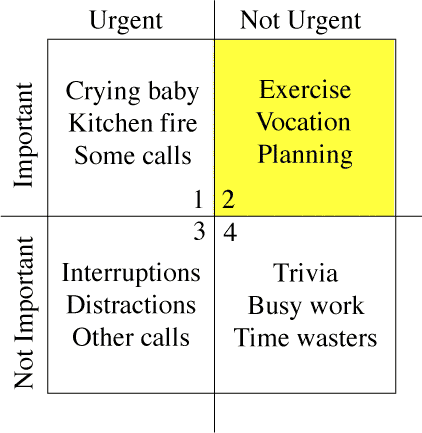Review:
The System of the World, by Neal Stephenson
| Series: |
The Baroque Cycle #3 |
| Publisher: |
William Morrow |
| Copyright: |
2004 |
| ISBN: |
0-06-052387-5 |
| Format: |
Hardcover |
| Pages: |
892 |
This is the third book of the three-volume
Baroque Cycle. I think
you could, if you really wanted, read it without reading the previous
volumes; Stephenson is certainly long-winded enough that you can pick up
most of what's going on while you read. It's been a year since I read the
second volume, and I only resorted to Wikipedia a couple of times to
remember plot elements (and mostly from the first book). However, I
wouldn't recommended starting here. Many of the character relationships,
and most of the underpinning of the plot, is established in the previous
volumes and given more significance by them. You would also miss
The Confusion, which is the best book of
the series, although none of this series rises to the level at which I'd
recommend it except under specific circumstances.
Quicksilver establishes the characters
of Daniel Waterhouse, a fictional Puritan whose family was close to
Cromwell and who became a friend to Isaac Newton in the days following the
Restoration; Jack Shaftoe, a vagabond who wanders Europe in a sequence of
improbable adventures; and Eliza, who becomes a friend to Leibniz and a
spy for William of Orange. The Waterhouse sections are prominent in
Quicksilver: full of the early history of the Royal Society,
alchemy, and a small amount of politics. Of those three characters, Eliza
is by far the most interesting, which meant that I was delighted when
The Confusion dropped Waterhouse almost entirely and mixed Eliza's
further story with more improbable but entertaining sea adventures of Jack
Shaftoe.
You will immediately sense my root problem with
The System of the
World when you hear that it is almost entirely about Daniel Waterhouse.
While Eliza and Jack both appear, they play supporting roles at best, and
Eliza's wonderful sharp intelligence and pragmatic survival skills are
left out almost entirely.
Instead, this is a novel about Waterhouse's return to England after
spending quite a bit of time in the American colonies working on
calculating machines. He is almost immediately entangled in dangerous
politics from multiple directions: the precarious national politics in
England near the end of the reign of Queen Anne, Isaac Newton's attempts
to maintain the currency of England as Master of the Mint, and a bombing
attempt that may have been aimed at him, may have been aimed at Newton,
and may have been aimed at someone else entirely. Much of the book
consists of an extended investigation of this bombing plot, skullduggery
involving counterfeiters, and attempts to use the currency and the Mint as
part of the political conflict between Whigs and Tories, mixed in with
attempts to construct a very early computer (this
is Stephenson,
after all). Leibniz and Eliza come into this only as confidants of the
Hanoverians.
All this may sound exciting, and there are parts of it that hold the
attention. But this book sprawls as badly as
Quicksilver did.
There's just too much detail without either enough plot or enough clarity.
Stephenson tries to make you feel, smell, and hear the streets of London
and the concerns of an idiosyncratic group of semi-nobles during one of
the more interesting junctures of British history, but he does that by
nearly drowning you in it, and without providing enough high-level
guidance. For most of the book, I felt like I was being given a tour of a
house on my hands and knees with a magnifying glass. It's a bad sign when
the reader of a historical novel is regularly resorting to Wikipedia, not
to follow interesting tangents of supporting material, but to try to get a
basic sense of the players and the politics involved because the author
never explains them clearly.
If you're more familiar with the details of British history than I am, and
can more easily follow the casual intermixing of two or three forms of
address for the same historical figure, you may not have that problem.
But I think other structural issues remain, and one of the largest is
Waterhouse himself.
Jack Shaftoe, and particularly Eliza, are more interesting characters
because they're
characters. They're not always particularly
believable, but they attack the world with panache and are constantly
squirming into the center of things. Stephenson's portrayals of Newton,
Leibniz, the Duke of Marlborough, Sophia of Hanover, Peter the Great, and
the other historical figures who show up here are interesting for
different reasons: Stephenson has history to draw on and elaborate, and
it's fascinating to meet those people from a different angle than dry
lists of accomplishments. History has a way of providing random details
that are too bizarre to make up; Isaac Newton, for example, actually did
disguise himself to infiltrate London criminal society in pursuit of
counterfeiters while he was Master of the Mint!
Waterhouse, for me, has none of these advantages. He is an invented
character in whom I have no pre-existing interest. He drifts through
events largely through personal connections, all of which seem to be
almost accidental. He's welcome in the councils of the Royal Society
because he's apparently a scientist, but the amount of actual science we
see him doing is quite limited. His nonconformist background allies him
squarely with the Whigs, but his actual position on religious matters
seems much less set than the others around him. What he seems to want,
more than anything else, is to help Leibniz in the development of a
computer and to reconcile Newton and Leibniz. And he's not particularly
effective at either.
In short, he has little in the way of memorable character or dynamism,
despite being the primary viewpoint character, and seems to exist mostly
to know everyone and be everywhere that's important to the story. He
feels like an authorial insertion more than a character. It's quite easy
to believe that Stephenson himself would have loved to be in exactly the
role and situation that Waterhouse finds himself in throughout the book,
in the middle of the councils of the wise and powerful, in just the right
position to watch the events of history. I can sympathize, but it doesn't
make for engrossing reading. Novels live and die by the strength of their
characters, particularly their protagonists; I want more than just a
neutral viewpoint.
The third major structural problem that I had with this book is that I
think Stephenson buries his lede. After finishing it, I think this is a
book with a point, a central premise around which all the events of the
story turn, and which is the philosophical culmination of
The
Baroque Cycle as a whole. But Stephenson seems oddly unwilling to state
that premise outright until the very end of the book. For the first half,
one could be forgiven in thinking this is a story about alchemy and the
oddly heavy gold that's been a part of the story since
The
Confusion, or perhaps about foundational but forgotten work on
computation that preceded Babbage by a century. But those all turn out to
be side stories, sometimes even without a proper conclusion. I appreciate
honoring the intelligence of the reader, and I presume that Stephenson
would like to guide the reader through the same process of realization
that the characters go through, but I think he takes this much too far and
fails to make the realization clear.
I'll therefore state what I believe is the premise outright, since I think
it's a stronger book with this idea in mind:
The System of the
World is a continuation of the transformational economics shown in
The Confusion into the realm of politics. Specifically, it's about
the replacement of
people with
systems, about the journey
towards Parliamentary supremacy, central banking, and the persistent
state, and about the application of scientific principles of consistency
and reproducibility to politics and economics (however fitfully and
arbitrarily).
Quicksilver was about the rise of science;
The
Confusion was, in retrospect, about the rise of economics; and
The
System of the World tries to be about the rise of technocratic modern
politics, barely perceptible among the squabbles between Tories and Whigs.
I think that's a fascinating premise, and I would have loved to read a
book that tackles it head-on. That's a concept that is much more familiar
from the late 19th and early 20th centuries in the context of Marxism,
early socialism, technological utopianism, and similar attempted
applications of scientific analysis to political and human behavior for
the betterment of human civilization. Shifting that 200 years earlier and
looking at a similar question from the perspective of the giants of the
Enlightenment feels full of of potential. There are moments when I think
Stephenson captures the sense of a seismic shift in how economies are run,
knowledge is established, and civilizations are knit together. But, most
of the time, it just isn't clear. There's so much other stuff in this
book, and in the whole series: so many false starts, digressions,
abandoned plots, discarded characters, and awkward attempts at romance (as
much as I like the characters, Stephenson's portrayal of the relationship
between Eliza and Jack is simply ridiculous and not particularly funny)
that the whole weight of the edifice crushes what I think is the core
concept.
Stephenson is never going to be sparse. When you start a Stephenson
novel, you know it's going to be full of chunks of partly digested
encyclopedia and random research findings that may have nothing to do with
the plot. But his best books (
Snow
Crash,
The Diamond Age, even
Cryptonomicon) have an underlying
structure off of which all of those digressions are hung. You can see the
bones beneath the flesh, and the creature they create is one you want to
get to know.
I'm not sure there are any bones here, and that may be the peril, for
Stephenson, of writing historical fiction. I wonder if he felt that the
structure of history would provide enough structure by itself that he
could wrap a few plots around the outside of it and call it good. If so,
it didn't work, at least for me. A lot of things happen. Some of them
are even exciting and tense. A lot of people meet, interact, and show off
their views of the world. A great deal of history, research, and sense of
place is described in painstaking detail. But at the end of the book, I
felt like I had to reach for some sort of point and try to retrofit it to
the story. Lots happened, but there wasn't a
novel. And that
makes it quite hard to get enthused by the book.
If you adored
Quicksilver, I suspect you will also like this. I
think they're the most similar. If, like I did, you thought
The
Confusion was a significant step up in enjoyment in the series and were
hoping the trend will continue, I'm sad to report that it didn't.
If you were considering whether to read the whole series and were waiting
to see what I thought of the end, my advice is to give
The Baroque
Cycle a pass unless you absolutely love Stephenson's digressions, don't
care if they're about history instead of current technology, and cannot
live without 3,000 pages of them. It's not that they're bad books, but
they're very long books, they take a significant investment of time and
attention, and I think that, for most readers, there are other books that
would repay a similar investment with more enjoyment.
Rating: 5 out of 10
 What happened about the reproducible
builds effort for this week:
Media coverage
Debian's effort on reproducible builds has been covered in the June 2015 issue of
Linux Magazin in
Germany.
What happened about the reproducible
builds effort for this week:
Media coverage
Debian's effort on reproducible builds has been covered in the June 2015 issue of
Linux Magazin in
Germany.

 Toolchain fixes
Toolchain fixes



 I ve made a new release of my curiously popular SteamOS derivative, and given it a new name: Stephenson s Rocket.
I ve made a new release of my curiously popular SteamOS derivative, and given it a new name: Stephenson s Rocket.
 You can download the new release from
You can download the new release from  I was bracing myself for a rough night, but Zoe slept through until almost 6am.
Today was playgroup again, so we just took a slow start to the day and headed
out on the bike a bit after 9am.
There was a mix of new faces and people from last week. I packed a lunchbox
this time instead of relying on the snack collection in my "Dad Bag" backpack.
We worked on trying to approach other girls to get them to play.
Unfortunately they're all that little bit younger and more shy, so we haven't had
a huge success. Zoe's been pretty happy just playing with the various toys and
playing with me. Parachute time was a big hit again.
I think there were about 25 adults there (I was the only Dad this week), with
many with multiple children. The youngest baby I saw was a 7 week old.
Zoe had been asking me what a honeydew was, so after Playgroup we dropped by
the
I was bracing myself for a rough night, but Zoe slept through until almost 6am.
Today was playgroup again, so we just took a slow start to the day and headed
out on the bike a bit after 9am.
There was a mix of new faces and people from last week. I packed a lunchbox
this time instead of relying on the snack collection in my "Dad Bag" backpack.
We worked on trying to approach other girls to get them to play.
Unfortunately they're all that little bit younger and more shy, so we haven't had
a huge success. Zoe's been pretty happy just playing with the various toys and
playing with me. Parachute time was a big hit again.
I think there were about 25 adults there (I was the only Dad this week), with
many with multiple children. The youngest baby I saw was a 7 week old.
Zoe had been asking me what a honeydew was, so after Playgroup we dropped by
the  Please excuse the intrusion to your usual software and co-op news items but vine seems broken and as part of my
Please excuse the intrusion to your usual software and co-op news items but vine seems broken and as part of my 













 Big bad baby boomers
It is obvious that older voters prefer the conservative "coalition" parties, 57% of over-55s in particular. It is a huge jump from the 44% of voters in the age group below them.
What this table doesn't tell us is that Australia's population is top-heavy with
Big bad baby boomers
It is obvious that older voters prefer the conservative "coalition" parties, 57% of over-55s in particular. It is a huge jump from the 44% of voters in the age group below them.
What this table doesn't tell us is that Australia's population is top-heavy with 
 Not too long ago, when I was a student myself, one of our prominent universities was subjected to a very similar scam. Four members of the Tin Tin for NUS ticket at
Not too long ago, when I was a student myself, one of our prominent universities was subjected to a very similar scam. Four members of the Tin Tin for NUS ticket at  The specific allegations about the Young Labor ballot suggest that those people particularly keen to win had printed fake student cards and given them to stooges who would impersonate other Young Labor members who had not attended to vote in person.
Where are they now?
It is no co-incidence that these students were (and still are) members of Labor Unity, a powerful faction within Australia's ruling Labor Party, the
The specific allegations about the Young Labor ballot suggest that those people particularly keen to win had printed fake student cards and given them to stooges who would impersonate other Young Labor members who had not attended to vote in person.
Where are they now?
It is no co-incidence that these students were (and still are) members of Labor Unity, a powerful faction within Australia's ruling Labor Party, the  For example, the recent incident where
For example, the recent incident where 
 Today, she's introduced
Today, she's introduced  A Queensland pensioner made
A Queensland pensioner made  The scariest thing is that if Australians see through this racist charade and refuse to vote for it, we could end up with something equally obnoxious: the
The scariest thing is that if Australians see through this racist charade and refuse to vote for it, we could end up with something equally obnoxious: the  The left column, Urgent items, typically must be executed by a certain date (e.g. buying a gift before a birthday or installing a new SSL certificate before the old one expires). A security update or Acrobat reader update does not have this same characteristic. Under this model:
The left column, Urgent items, typically must be executed by a certain date (e.g. buying a gift before a birthday or installing a new SSL certificate before the old one expires). A security update or Acrobat reader update does not have this same characteristic. Under this model: